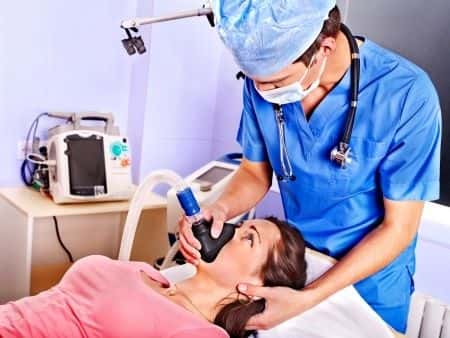Outpatient Procedure Results in Brain Injury
This case involves a patient who suffered a heating pad burn during a rhizotomy procedure at an outpatient surgical center, leading to cardiac arrest and severe brain injury.
Updated on
Case Summary
This case involves a 40-year-old female with no significant past medical history who underwent rhizotomy (radiofrequency ablation) at an outpatient spine surgery center during which anesthesia was administered by a CRNA. After the procedure, the patient was turned on the operating room table for transfer to a gurney when the nursing staff noticed pallor and mottling of the patient’s skin on the upper thigh and buttocks. A physician was called to assess the patient and concluded that the patient had suffered a heating pad burn. Shortly afterward, nursing notes indicate that the patient had a weak pulse that subsequently decompensated into bradycardia, followed by cardiac arrest. Cardiopulmonary resuscitation was started, but the patient demonstrated poor oxygen saturation until EMS arrived approximately 20 minutes later. EMS intubated the patient and transferred to the ER. The patient was subsequently diagnosed with severe anoxic brain injury.
Case Theory
Rhizotomy, also commonly called selective dorsal rhizotomy, or selective posterior rhizotomy, is a treatment designed to resolve nerve spasticity unresponsive to less invasive treatments. Rhizotomy is normally performed under general anesthesia. During the procedure, the patient is placed in a prone position after which an incision is made along the lumbar spine to expose the sensory nerve roots at the center of the spinal cord. The individual nerve rootlets are then electrically stimulated via incisions made to the nerves that cause spasticity, usually 25-50% of the nerve rootlets. Patients scheduled for rhizotomy undergo a medical clearance prior to the procedure to document spasticity, and the patient’s general health, including their likely response to anesthesia and the stress of undergoing surgery.
Outpatient CRNAs have similar responsibilities as anesthesiologists, including administering medicine and ordering diagnostic tests. The main difference between these two professions is that anesthesiologists are medical doctors who administer anesthesia, while nurse anesthetists are registered nurses who often assist or work with doctors to administer anesthesia. Nurse anesthetists may also be allowed to work independently in some states, in others they must work with a supervising board-certified physician. Proper outpatient credentialing includes the documentation and regular update of necessary qualifications for the anesthesiologist or CRNA under the governing state and federal laws.
There are small but significant risks associated with rhizotomy, including nerve damage, permanent loss of sensation, altered sensation, weakness of the lower extremities, bowel and bladder dysfunction, increased hip dislocation, and progression of scoliosis, however, the risk of death during rhizotomy is limited to the risks associated with anesthesia. The morbidity rates vary between centers that perform the surgery. Up to 5% of patients may suffer from persistent and significant adverse effects.
In this case, substandard care, negligent supervision, lack of adequate resuscitative equipment, and the failure of the surgical facility to implement proper policies and procedures for cardiopulmonary resuscitation led to anoxic brain injury in this patient.
Expert Witness Specialty/Specialties
Specialty Description: Outpatient Surgical Center Administration
Questions for the Expert Witness
- What are the most pertinent policies and/or procedures that outpatient surgical centers should implement to perform resuscitative measures in the event of cardiopulmonary arrest?
- What is the liability of the supervising physician in this case?
Expert Witness Involvement
A director of an outpatient surgery center administrator can review the patient’s records, opine on the care she received, and discuss the requirements and equipment required to operate such a facility including ACLS credentialing, contracts with anesthesiology practice groups, crash cart and/or resuscitative equipment, and patient transfer protocols.
About the author
Erin O'Brien
Erin O'Brien is a senior medico-legal writer and editor, with 25 years of experience authoring healthcare deliverables. Previously, Erin authored an award-winning column in the health and wellness sector, guest hosted a wellness radio show, and received an FMA Charlie Award for Excellence in Writing.
Erin has reviewed and completed case studies for thousands of medical malpractice cases, both plaintiff and defense nationwide, and was presented the US Chamber of Commerce Best Small Business Blue Ribbon designation. Erin is an experienced Medical Risk Consultant and device start-up project manager. She has consulted for numerous successful healthcare and bio-tech start-ups. After completing a Bachelor of Science degree at the University Of Wisconsin, Erin pursued an educational background in Healthcare Risk Management at the University of South Florida. Erin crafts her work with attention to detail, readability, healthcare marketing regulations, and medical standard of care.
Subscribe to our newsletter
Join our newsletter to stay up to date on legal news, insights and product updates from Expert Institute.
Sign up nowFind an expert witness near you
What State is your case in?
Subscribe to our newsletter
Join our newsletter to stay up to date on legal news, insights and product updates from Expert Institute.



